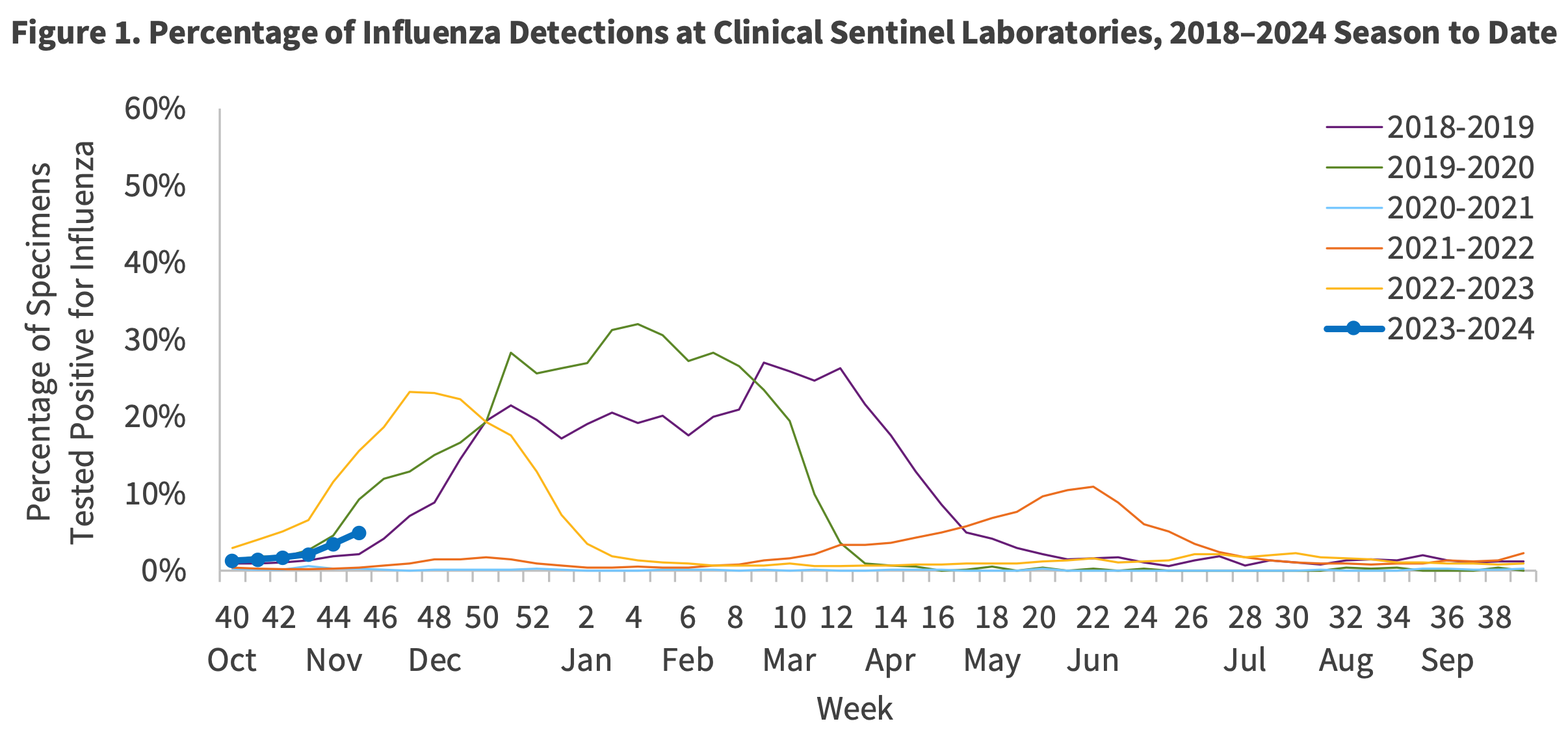Infection
14 Dead From Flu And RSV In CA As Infections Climb
CALIFORNIA — California has recorded its 14th influenza death of the season as cases of flu and RSV climb across the Golden State and the nation.
Traditionally, the winter flu season ramps up in December or January. But it took off in October last year, and is making a November entrance this year.
“We’re off to the races,” said Dr. William Schaffner, a Vanderbilt University infectious diseases expert.
Find out what’s happening in Across Californiawith free, real-time updates from Patch.
The Centers for Disease Control and Prevention posted new flu data on Friday, showing very high activity last week in Louisiana, and high activity in Alabama, Florida, Georgia, Mississippi, New Mexico and South Carolina. It was also high in the District of Columbia and Puerto Rico, the U.S. territory where health officials declared an influenza epidemic earlier this month.
Flu activity was moderate but rising in New York City, Arkansas, California, Maryland, New Jersey, North Carolina, Tennessee and Texas.
Find out what’s happening in Across Californiawith free, real-time updates from Patch.
In California for the latest reporting period —the week ending Nov. 11 — influenza cases rose to account for 5 percent of specimens tested, while respiratory syncytial virus infections — better known as RSV —shot up nearly 12 percent of all specimens submitted for testing. The state recorded five new flu deaths that week, accounting for more than a third of the season’s total influenza-coded deaths statewide, according to data released by the California Department of Public Health.
Of those deaths, 12 were people aged 65 or older and two were between 50 and 64, according to the data.
Alicia Budd, who leads the CDC’s flu surveillance team, said several indicators are showing “continued increases” in flu.
There are different kinds of flu viruses, and the version that’s been spreading the most so far this year usually leads to a lesser amount of hospitalizations and deaths in the elderly — the group on whom flu tends to take the largest toll. In California, Influenza A (H1N1) is the prevalent strain.
So far this fall, the CDC estimates at least 780,000 flu illnesses, at least 8,000 hospitalizations and at least 490 flu-related deaths — including at least one child.
RSV is unusually active for this time of year. Infections across the state are up and three RSV deaths have been recorded so far. Health officials expect cases to increase in the coming weeks.
Current RSV activity “is more similar to activity seen later in November and December, compared to seasons prior,” a California Department of Public Health spokesperson told Patch earlier this month. “RSV activity has been starting earlier than usual during the past three RSV seasons.”
It’s a worrisome post-pandemic trend that could portend another vicious cold and flu season — particularly for the very young and very old, for whom RSV is most deadly.
The first vaccines licensed in the U.S. to protect against RSV were approved earlier this year. The immunizations are recommended for those 60 and older or pregnant. There is a more limited supply available for infants and toddlers, according to state health officials.
Budd said that it’s not yet clear exactly how effective the current flu vaccines are, but the shots are well-matched to the flu strains that are showing up. In the U.S., about 35% of U.S. adults and 33% of children have been vaccinated against flu, current CDC data indicates. That’s down compared to last year in both categories.
Flu vaccination rates are better than rates for the other two main respiratory viruses — COVID-19 and RSV. About 14% of adults and 5% of children have gotten the currently recommended COVID-19 shot, and about 13.5% of adults 60 and older have gotten one of the RSV shots that became available earlier this year.
“As with all immunizations, CDPH encourages individuals to check with their healthcare provider to determine which are available for them and their families,” CDPH said.
The CDC recommends annual flu vaccines for everyone over the age of 6. It’s best to get them in September or October, but if you haven’t gotten a shot yet, you should still get one, the CDC said.
The makeup of the flu vaccine varies annually, which means some years’ vaccines are more effective against the year’s strains than others.
“There is evidence that this year’s flu vaccine will be a strong match for circulating strains,” the Los Angeles County Department of Public Health said in a statement.
In the Southern Hemisphere — where the winter flu season just ended — the vaccine reduced the risk of flu-associated hospitalizations by 52 percent, according to the CDC. Health officials say that bodes well for the vaccine’s effectiveness in the Northern Hemisphere.
About 35 percent of adults and 33 percent of children have received a flu vaccine this season, which is down compared to this time last year, according to the CDC.
The Associated Press, MIKE STOBBE AP Medical Writer contributed to this report.
Get more local news delivered straight to your inbox.Sign up for free Patch newsletters and alerts.

